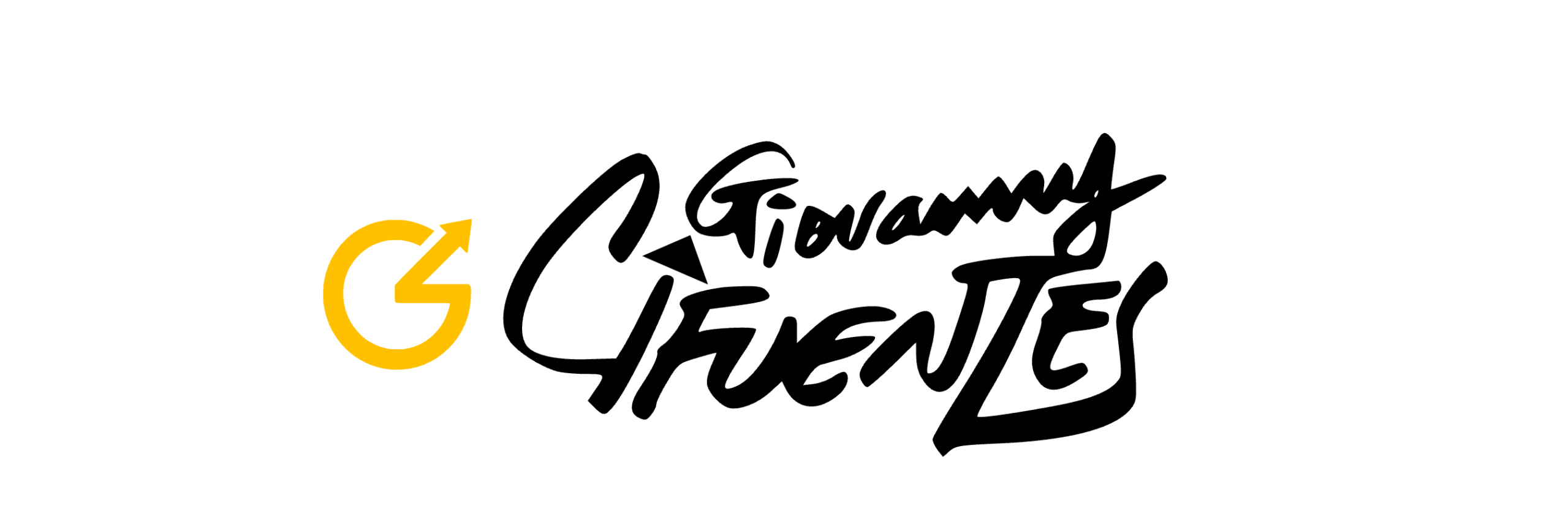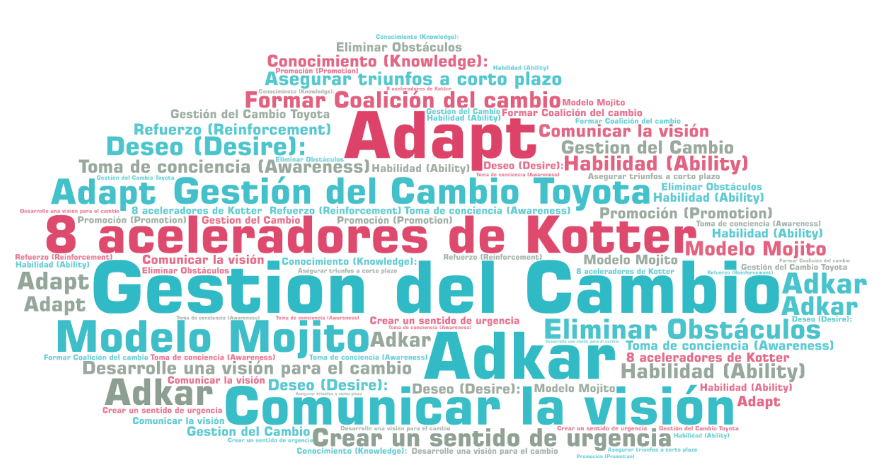When you want to make a change in an area of an organization, doubts arise about where to start, how to make the transition and what we need to make an impact.
For this reason, it is important to take as a base some models that inspire us to adopt what we need to our reality, to have a structure that guides us in the steps to be taken, for this reason I share some models that are useful to take as a reference in a change adoption process.
The engine of major change must be the convergence of many people and diverse areas.
Accelerate: Building Strategic Agility for a Faster-Moving World, John Kotter
Kotter’s eight accelerators
In this model, author John Kotter presents 8 accelerators to adopt change, helps us to radically increase the number of people committed to creating or executing strategic initiatives, the key lies in the volunteers, the passion for doing things, leadership and work in dual system (mix between hierarchy and network)
- Create a sense of urgency: Create the Message in which a team believes deeply and that inspires them to take advantage of a great strategic opportunity. A Great Opportunity statement should be rational (why us, why now, why …), emotionally captivating (a sincere, positive, and authentic call to the heart) and memorable (clear, short, and simple).
- Form Coalition for change: Form the team that will mobilize everything necessary to adopt change, developing vision, passion, innovation and celebration. What exactly do we do? What are the responsibilities? Who is in charge? Who are the interested parties?
- Develop a vision for change: Establish a vision for change for your work and a list of possible strategic initiatives to focus on. A vision: it has to do with actions, people, clients and, therefore, with the goals in which it aspires to achieve.
- Communicate the vision: Share the vision to find followers of ideas, using trainings, communication tools and face-to-face conversations, the goal is to get most people to start mobilizing aligned with the vision or initiatives that are going To make.
- Eliminate Obstacles: Establish the current state of affairs, analyzing the context and restrictions and find mechanisms to eliminate the obstacles that arise. Is there anyone who resists change? Are there processes or structures that limit?
- Ensure short-term successes: Create goals that reflect results at short intervals that provide visibility of progress and help mobilize more people.
- Maintain the change: Set the mechanism to maintain the search for goals that challenge the current state, seeking continuous improvement in everything that is being done and not settle for early victories, always go further and make profound changes
- Integrate change: Impact on the culture of the organization so that change is reflected in organizational dynamics and is a habit that is maintained over time.
Adkar model
In this model, author Jeff Hiatt presents how to take appropriate actions for people to integrate into changes, accepting, adopting and using new processes, tools or techniques competently, the model has five dimensions:
Awareness: Awareness of the need for change, the message must be repeated constantly and in different ways. There is no greater motivator than that leader who leads by example. How to make it urgent?
Desire: Desire to participate in and support change, people do not change only when they feel the urgency of the idea, they also change behavior when it makes them feel better, if we want people to change, we must try to reach their wishes more internal. How to make it desirable?
Knowledge: Some people need help to make a change and it is important to consider who will assist them. List the skills and knowledge necessary to support this change, during and after the transition. Who will teach it? How is it going to be taught? What is the necessary time?
Ability: Putting theory into practice, being able to demonstrate new skills and behaviors, change requires skill and practice, learning how to do things well takes time and effort. How are we going to teach them to do? How do we check progress?Reinforcement: Actions, recognition, mechanisms and rewards that increase the probability that change will be continuous
What are short-term wins? What makes it sustainable?
Adapt Model
The ADAPT model is adapted from author Mike Cohn of the ADKAR model, with the aim of presenting what is needed as part of adopting agility in organizations.
- Awareness: Awareness that the current process is not giving acceptable results. Communicate there is a problem, using metrics that provide a strong reinforcement of the main reasons for change, show experience from other organizations.
- Desire: Desire to embrace change as a way to address current issues, to show that there is a better way, to engage employees in the effort and importance of change.
- Ability: Learn new skills, but also unlearn old habits, learn new technical skills, teamwork, deliveries in short periods of time, feedback.
- Promotion: Exchange experiences so that we can celebrate and others can see successes, publish success stories and attract attention and interest.
- Transfer: Bring change to all the necessary areas human talent, finance, marketing, legal, operations, auditing, among others.
6 Steps to Toyota’s Change Management
In this model, author Jeffrey K. Liker presents an adaptation of what Toyota uses for change management, presenting ways to guide thinking to better respond to the specific challenges of organizations.
What for ?: Clearly define your problem or need
What ?: Carefully evaluate the process and improve it as much as you can before adding new ones.
When ?: Introduces the new model with a pilot plan to compromise it, discover flaws and work on its implementation.
Where ?: Gradually implement the new approach in other places, step by step, they established the direction of the place as responsible and leader of the process.
Who ?: Considers what skills are needed and develops a formulation and incorporation plan for those affected by the new approach.
How ?: By using an effective daily management system, it requires managers to continually work to improve.
Mojito model
Author Jurgen Appelo takes different models and presents a Metal model for change management 3.0
1. Dancing with the system: using Deming PDCA’s continuous improvement model (Plan, Do, Verify and Act) It is important that a goal is never defined in terms of activity or methods, it must always be directly related to how it will improve the life for all. The goal of the system must be clear to all who are part of the system. You must include plans for the future. The goal is a value judgment. We can only learn and iterate, inspect and adapt. What is our goal? Where do things work well? When and where to start? How to measure the results?
2. Mind the people: use of the ADKAR model for change management. How to communicate? How to lead by example? How to make it urgent? How to make it desirable? How are we going to teach them? What are short-term wins? What makes it sustainable?
3. Stimulate the network: using the Rogers Adoption Curve model, an organization is a network and, as in any complex social system, behaviors spread and will depend on each of the types of people they meet, Initiators , Innovators, Early Adopters, Early Majority, Late Majority, Laggards, the secret is knowing how to reach these different classes of people in the network with different approaches and messages.
We are engaged? Who assists us? Who will be the innovators? Who are the first adopters? How will leaders help? How to attract the first majority? How to make it viral? How do you approach skeptics? How to avoid a relapse?
4. Change the environment: Using the Five I’s model, by manipulating the environment, we are automatically also manipulating people’s behavior.
Information: Use information irradiators to make people aware of the consequences of their current behavior.
Identity: Appeal to a superior identity (such as company culture) so that people feel the need to work together.
Incentives: Give small bonuses for good behavior, such as compliments or gestures of thanks.
Infrastructure: The tools and infrastructure that we set up around people greatly influence their behavior and also guide them.
Institutions: Present communities of practice, or other informal institutions, that can set standards of good conduct.
There are several models that serve as a reference to start a process of adoption of change, you can take the best of each and have a perspective of all the factors that must be kept in mind when we are starting this process.
Sources and references
Accelerate: Building Strategic Agility for a Faster-Moving World, John Kotter
How to Change the World: Change Management 3.0, Jurgen Appelo
The Toyota Way to Service Excellence: Lean Transformation in Service Organizations, Jeffrey K. Liker
Succeeding with Agile: Software Development Using Scrum, Mike Cohn
The Agile Consultant: Guiding Clients to Enterprise Agility, Rick Freedman

